
Introduction: Why Keep Indoor Plants?
In a world when glass walls, concrete buildings, and artificial lighting are the norm, indoor plants are a real and symbolic breath of fresh air.
These live things improve the entire atmosphere of a home, lower stress levels, boost mental health, and purify the air in addition to making our living areas more aesthetically pleasing.
NASA’s Clean Air Study claims that some indoor plants are effective natural air filters because they may absorb dangerous pollutants. More significantly, though, indoor plants help us connect with nature.
Having flora around serves as a subtle reminder to calm down, take a breath, and re-establish a connection with the earth in today’s fast-paced, technologically-driven world.
Indoor plants can flourish with little room and maintenance, regardless of whether you live in a large home, a small apartment, or a studio flat. Here is a detailed look at seven indoor plants that are not only well-liked but also useful, low maintenance, and packed with health advantages.
1. Snake Plant (Sansevieria trifasciata)
Overview

The snake plant, often called mother-in-law’s tongue, is a well-known houseplant with sword-like leaves that are usually green with pale green, silver, or yellow variegation.
Benefits
Air Quality: Eliminates airborne pollutants such as formaldehyde, benzene, trichloroethylene, and xylene.
Night Oxygen: One of the few plants that produces oxygen at night from CO₂.
Hardy: Suitable for people who travel frequently or forget to water, they can live with little maintenance.
Care Requirements
Light: Grows best in bright, indirect sunshine, but may tolerate low light levels.
Water: Use water carefully. To avoid root rot, allow the soil to completely dry out in between waterings.
Soil: Succulent or well-draining cactus soil. Humidity: Able to withstand dry air.
Fertilizer: During the growing season, once every two to three months.
Ideal Placement
Because it releases oxygen at night, it’s ideal for bedrooms. To improve vertical space, put it in corners or next to windows.
2. Peace Lily (Spathiphyllum spp.)
Overview
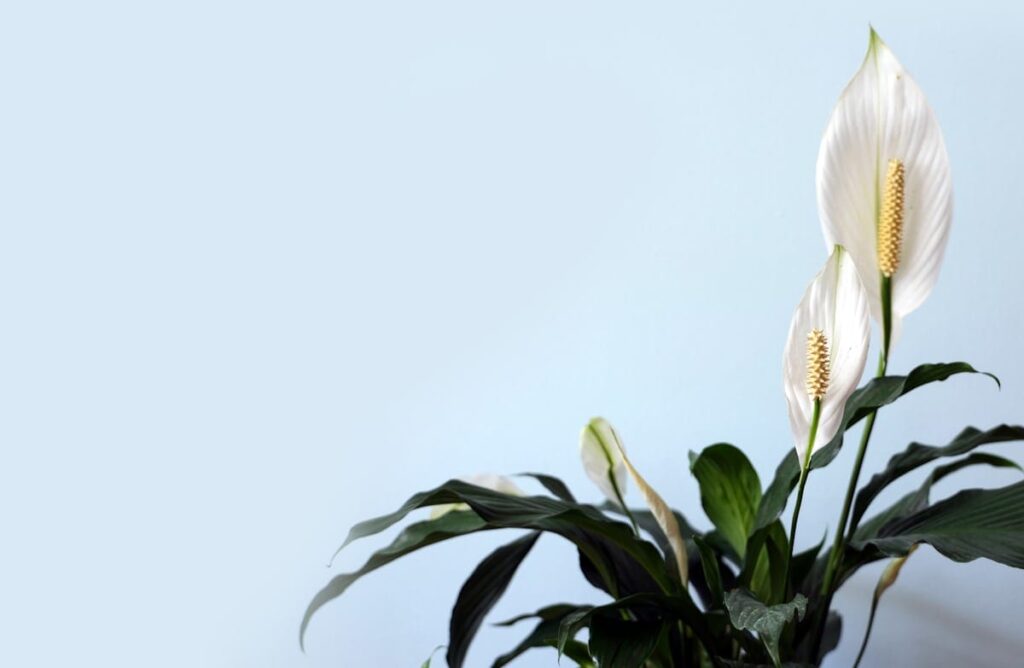
The peace lily is a graceful plant with beautiful white blossoms known as “spathes” and rich green foliage. It represents serenity, peace, and quiet.
Benefits
Air purifier : Mold spores, formaldehyde, benzene, and ammonia are all removed by an air purifier.
Humidity Control: Controlling humidity raises the air’s moisture content, which is ideal for dry homes.
Visual Appeal: The white blossoms softly contrast with dark interiors and bloom several times a year.
Care Requirements
Light: Prefers indirect light that is low to medium.
Water: Prefers soil that is continuously moist but not soggy. When thirsty, droops.
Soil: Rich, well-draining potting mix is the soil.
Humidity: It is best to have high humidity.
Fertilizer: Use a balanced houseplant fertilizer every six weeks.
Ideal Placement
Ideal for filtered-light living areas, kitchens, and restrooms. It can also serve as a focal point plant.
3. Pothos (Epipremnum aureum)
Overview
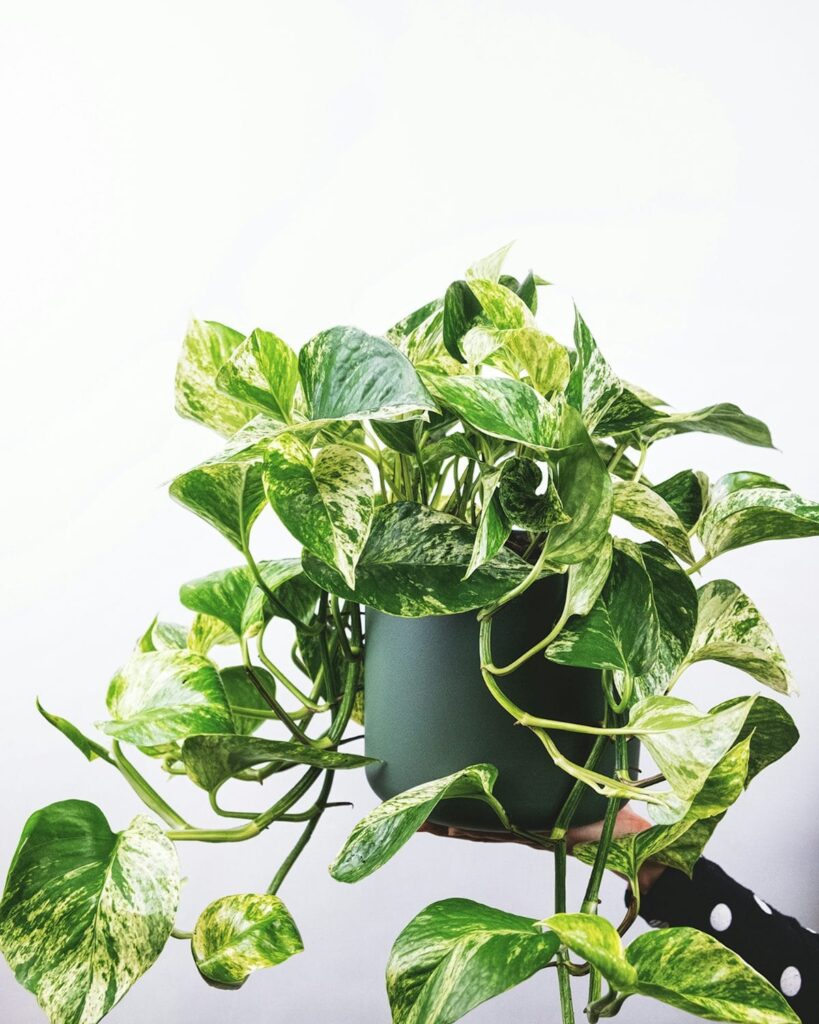
Devil’s ivy, also known as pothos, is a vining plant with heart-shaped leaves that can be green, yellow, or white in color. It’s among the most well-liked houseplants for beginners.
Benefits
Flexibility: Able to grow in soil, water, or hanging baskets.
Air Cleaner: Formaldehyde, toluene, and xylene are eliminated using an air cleaner.
Versatile Growth: Depending on training, it can either climb or trail.
Care Requirements
Light: Low to medium light is ideal for growth. Steer clear of the sun.
Water: Every two to three weeks. In between waterings, let the soil to dry.
Soil: Simple potting soil that drains well.
Humidity: Moderate humidity.
Fertilizer: In the spring and summer, apply once a month.
Ideal Placement
Hang in bedrooms, baths, or kitchens. It can also be trained around a moss pole or allowed to trail from shelves.
4. ZZ Plant (Zamioculcas zamiifolia)
Overview
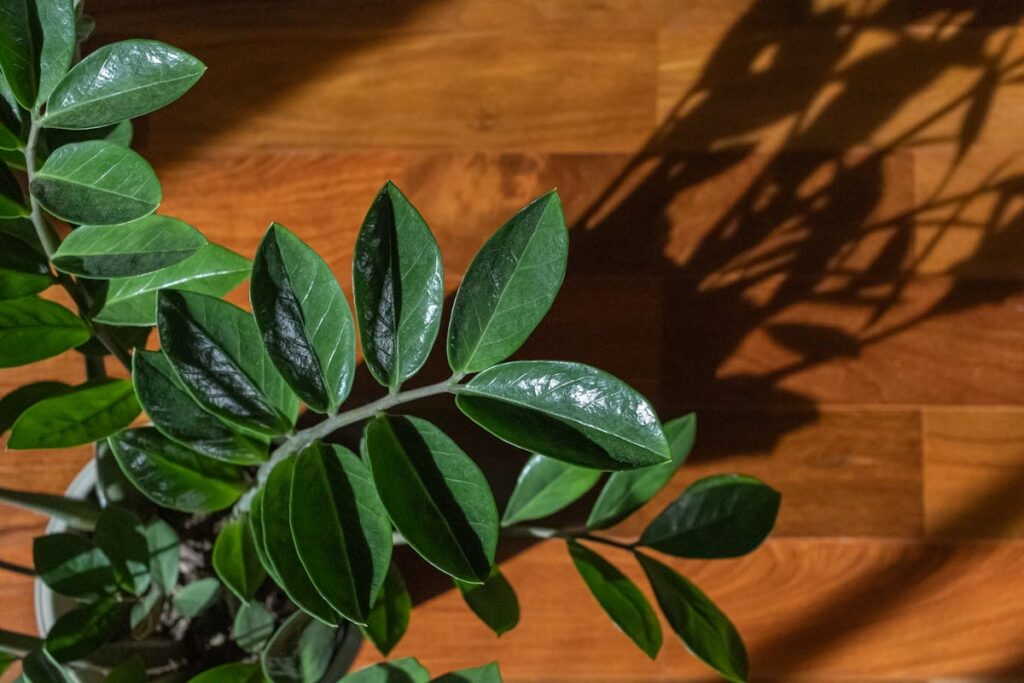
The ZZ plant is distinguished by its waxy, deep-green leaves that form a lovely wand-like pattern as they grow. It can last for weeks without water and is a great survivor.
Benefits
Tough & Resilient: Can withstand dry air, low light, and neglect.
Low Maintenance: Perfect for offices and busy people.
Air purification: Eliminates airborne contaminants through air purification.
Care Requirements
Light: Grows best in moderate, indirect light, but may tolerate low light levels.
Water: After the earth is totally dry, water it. Rhizome rot is caused by overwatering.
Soil: A mixture that drains well.
Humidity: Capable of withstanding dry interior air.
Fertilizer: Should be used twice a year.
Ideal Placement
Great for study desks, workplaces, or shady spots. gives modern spaces structure and a feeling of modernity.
5. Spider Plant (Chlorophytum comosum)
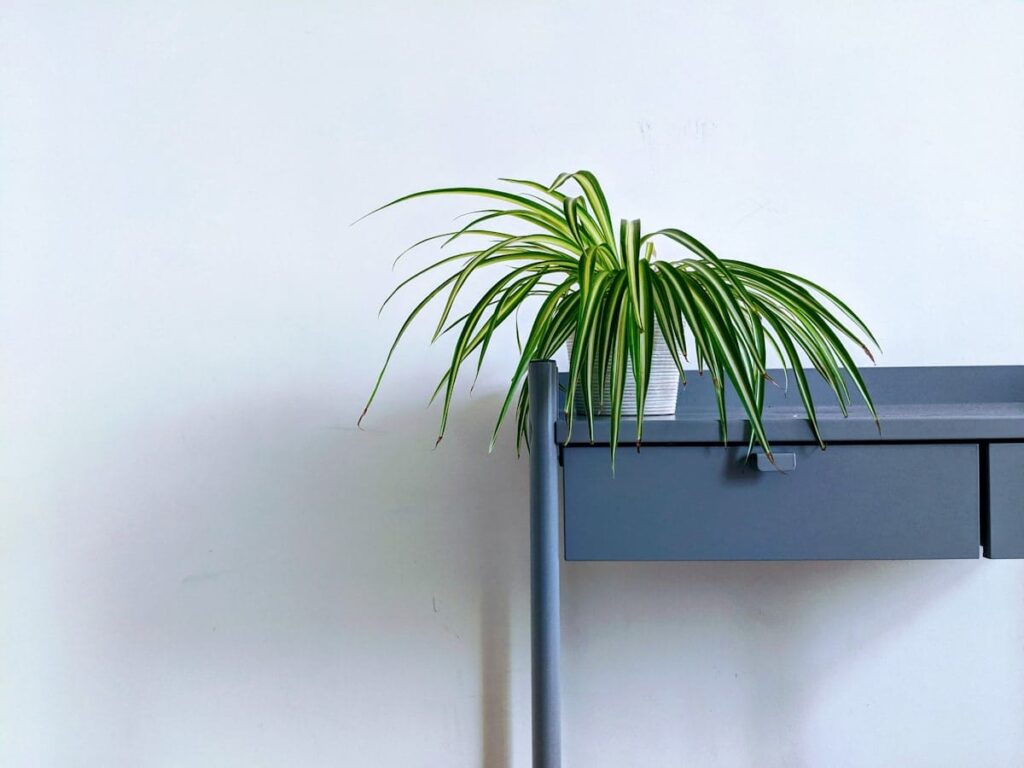
Overview
With their arching leaves and tiny plantlets (called “spiderettes”) that hang down like a mother spider cradling her young, spider plants are endearing.
Benefits
Air cleaner: Removes pollutants and carbon monoxide.
Non-Toxic: Children and pets can safely use it.
Easy to propagate: yields young plants that are suitable for repotting.
Care Requirements
Light: Tolerates shade but prefers bright, indirect sunlight.
Water: When the top inch of soil seems dry, apply water.
Soil: Indoor potting soil of any kind.
Humidity: Adapts well but enjoys humidity.
Fertilizer: During the growing season, every two to three weeks
Ideal Placement
Because baskets are soft and pet-safe, they can be hung in kitchens, sunrooms, or kids’ bedrooms.
6. Aloe Vera (Aloe barbadensis miller)
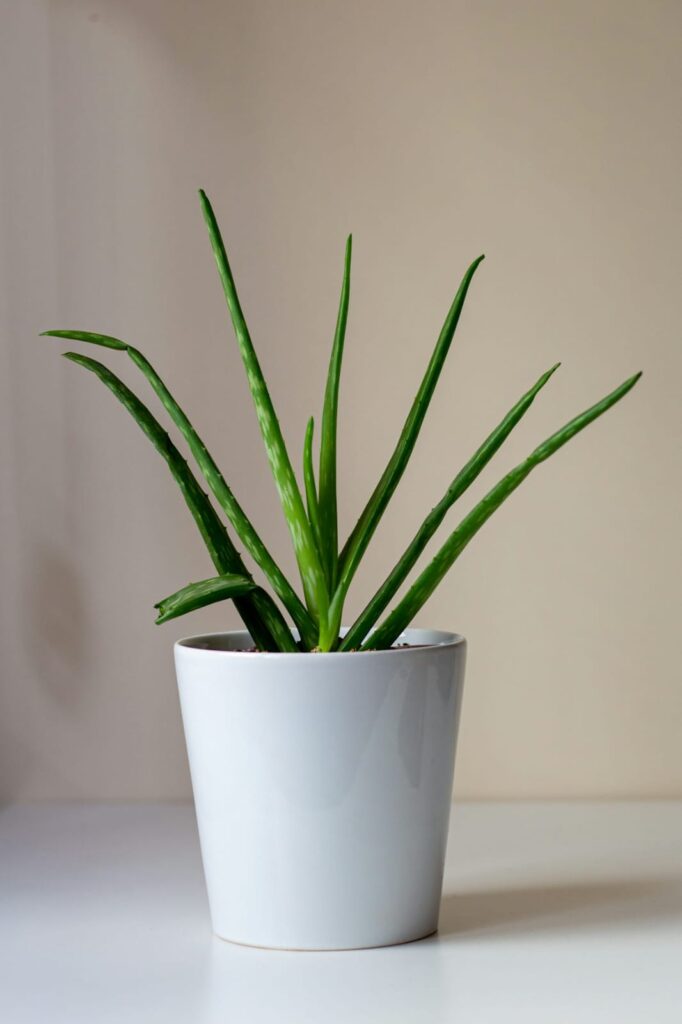
Overview
Aloe vera serves a decorative and practical purpose. It is a need in the home because of its thick, meaty leaves that are packed with therapeutic gel.
Benefits
Medicinal: Treats small cuts, burns, and bug bites.
Air quality: absorbs formaldehyde and benzene.
Low Maintenance: Requires little irrigation.
Care Requirements
Light: Bright direct or indirect light is required.
Water: Before applying additional water, let the soil completely dry up.
Soil: A mixture of succulents and cacti that drains well.
Humidity: Dry air is preferred for humidity.
Fertilizer: Infrequently—once in the spring and once in the summer—apply fertilizer.
Ideal Placement
On balconies, by bright windows, or on kitchen counters (for easy access to gel).
7. Rubber Plant (Ficus elastica)
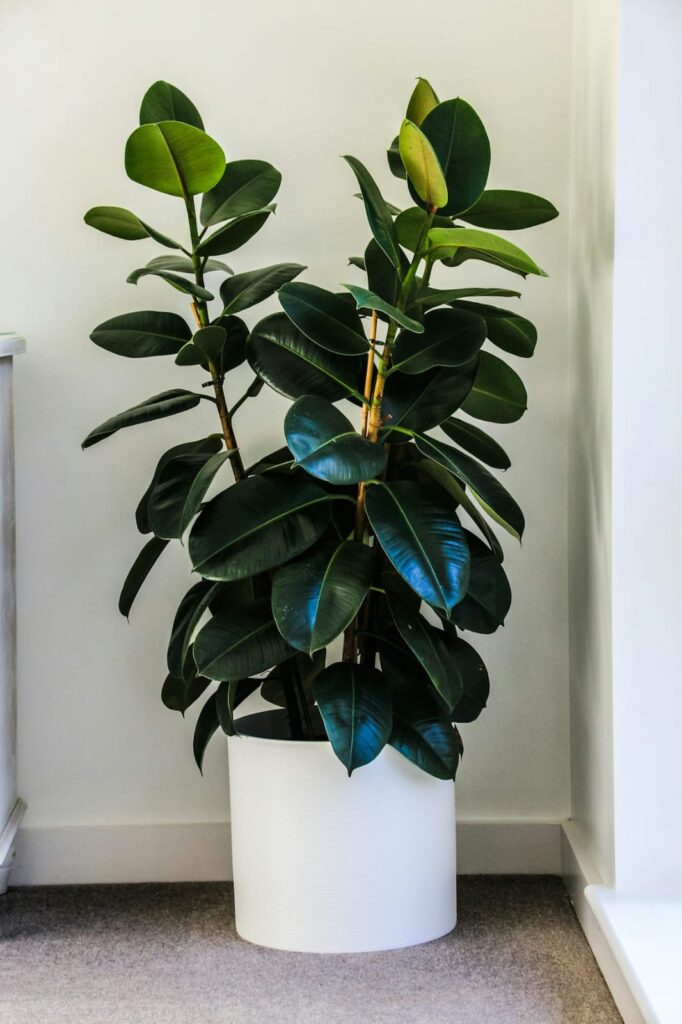
Overview
A plant with thick, burgundy or dark green foliage that is striking and dramatic. No matter where it is planted, the rubber plant makes a statement.
Benefits
Air purifier: Formaldehyde is eliminated from the air via an air purifier.
Retention of Moisture: The room’s humidity is maintained by its huge leaves.
Growth Potential: With proper care, it can develop indoors into a tree.
Care Requirements
Light: Indirect, bright light. Steer clear of direct sunlight as it can burn foliage.
Water: When the topsoil dries out, water. Avoid overwatering.
Soil: Perlite, peat, and well-aerated potting mix.
Humidity: Moderate to high humidity is preferred.
Fertilizer: Every month in the summer and spring.
Ideal Placement
In living rooms, halls, or foyers, it can be a striking focal point.
Essential Indoor Plant Care Tips
Lighting: Choose plants based on the type of light they receive (aloe vera for sunny places, peace lilies for low light). If natural light isn’t enough, use grow lights.
Watering: The worst killer of indoor plants is overwatering. Before watering, poke a finger 1-2 inches into the ground to check the moisture content.
Soil and Drainage: Use pots with drainage holes at all times. Select soil mixtures (peat-based, succulent mix, etc.) that are appropriate for the demands of your plants.
Preventing Pests: Watch out for fungus gnats, mealybugs, and spider mites. For the majority of common pests, neem oil or insecticidal soap works well.
Maintenance & Cleaning: Every month, wipe the leaves using a moist towel. To promote healthy growth, trim any dead or yellow leaves.
Health & Psychological Benefits of Indoor Plants
Cleaner Air: Removes dangerous volatile organic compounds (VOCs) such as carbon monoxide, formaldehyde, and benzene.
Increased Humidity: This is particularly crucial in arid locations especially during the winter.
Decreased Stress: Research indicates that houseplants can reduce cortisol levels.
Increased Productivity: Greenery is associated with increased attention, particularly in offices.
Quicker Recovery: Patients who have plants in their rooms recover more quickly.
Conclusion: Start Small, Grow Big
More than just ornaments, indoor plants are companions that promote calmness, connection, and a sense of grounding. There is a plant out there that fits your location, lighting, and degree of care, regardless of how experienced you are with plants.
Start with one or two low-maintenance plants, such as pothos or snake plants. Add more unusual items, such as peace lilies or rubber plants, as your confidence increases. Your house will gradually become a lush, peaceful green haven.
you can also read about
https://elegantandcosy.com/wp-admin/post.php?post=1462&action=edit
https://elegantandcosy.com/wp-admin/post.php?post=1446&action=edit
https://elegantandcosy.com/wp-admin/post.php?post=1433&action=edit
https://elegantandcosy.com/wp-admin/post.php?post=1416&action=edit
https://elegantandcosy.com/wp-admin/post.php?post=1411&action=edit
https://elegantandcosy.com/wp-admin/post.php?post=1387&action=edit
Some beautiful pots that you can buy for your home –
